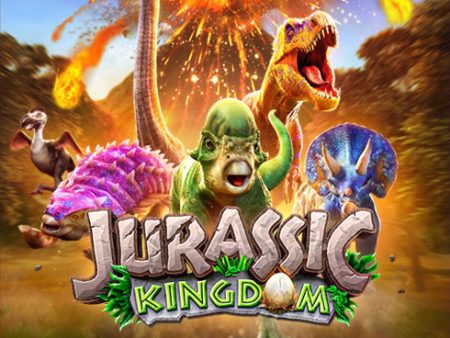Discover the timeless strategy of Bridge, now reimagined for the digital age with MayaGame – where skill, teamwork, and real money rewards meet in the ultimate card game experience.
Bridge is a timeless card game that has earned its place as one of the most sophisticated and strategic games ever played. Over the years, bridge has not only captivated card game enthusiasts but also become a fixture in competitive gaming worldwide. As the digital age has taken over, players can now experience bridge in a whole new way—through online platforms and casino apps. These apps allow players to enjoy bridge in the comfort of their own homes while potentially earning real money. In this guide, we’ll dive deep into the fundamentals of bridge, explore its complexities, and discover how MayaGame is redefining the bridge experience for a new generation.
The Fundamentals of Bridge
Before delving into the intricacies of bridge, it’s crucial to understand the game’s foundational rules and structure:
- Players: Bridge is played with four players, divided into two partnerships. These partnerships must work together, utilizing their individual strategies and skills to outwit the opposing team.
- Deck: A standard 52-card deck is used. Each player is dealt 13 cards, with the goal being to win as many tricks as possible.
- Bidding: The game starts with a highly complex bidding phase, where players communicate their hand strength through a series of strategic bids. Understanding the nuances of bidding conventions is a critical skill for any serious bridge player.
- Gameplay: After the bidding phase, one player, known as the declarer, attempts to fulfill the contract they’ve made during the bidding. The remaining players, known as defenders, try to thwart the declarer’s plan by playing strategically against them.
- Scoring: Points are earned based on the number of tricks won, and failing to fulfill a contract results in penalties. The game’s scoring system is intricate, with different points awarded for various accomplishments during play.
Why Bridge is So Complex
Bridge isn’t just a game of chance—it’s a game of skill, strategy, and communication. Let’s explore some of the key aspects that make bridge one of the most intellectually demanding card games:
1. Bidding Strategies
One of the most difficult and rewarding aspects of bridge is the bidding phase. Unlike poker, where players bet based on the strength of their hand, bridge players must communicate the strength of their hands using a system of bidding conventions. These conventions are complex, and learning them requires both memorization and strategic thinking.
During the bidding phase, players must:
- Memorize and apply various bidding conventions.
- Decipher their partner’s bids to gauge the strength of their hand.
- Develop a strategy based on the hand they are dealt, considering both their own and their partner’s potential.
2. Memory and Deduction
Bridge is a game of memory, and advanced players are known for their ability to recall cards that have already been played. This allows them to predict what cards are left in the hands of their opponents and their partner.
Key to this strategy is:
- Card counting: A technique often used in blackjack, card counting helps bridge players predict which cards remain in the deck and how likely it is that certain plays will succeed.
- Deductive reasoning: As the game progresses, players use the information they’ve gathered to make educated guesses about their opponents’ strategies.
3. Communication and Teamwork
While bridge requires individual skill, it is fundamentally a team game. Successful partnerships are built on trust, communication, and strategy. Since verbal communication between partners is not allowed, players rely on a series of non-verbal cues, such as bidding conventions and subtle plays, to convey information to their teammates.
Teamwork in bridge involves:
- Predicting partner’s moves: After playing together for a while, partners can often predict each other’s decisions based on experience and established strategies.
- Adjusting on the fly: A great partnership can adapt their play based on how the game unfolds, adjusting their strategies accordingly.
The Role of Artificial Intelligence in Bridge
Artificial Intelligence (AI) has made significant strides in many games, such as chess and poker. However, bridge remains a frontier of AI research due to its complexity. While games like chess have well-defined rules and visible variables, bridge involves incomplete information and requires strategic communication between partners, both of which present challenges for AI.
Key hurdles for AI in bridge include:
- Hidden information: In contrast to chess, where all pieces are visible, bridge involves interpreting hidden hands and using deduction to predict opponents’ moves.
- Strategic communication: AI systems struggle with the nuances of bidding conventions and the indirect signaling between bridge partners.
- Evolving strategies: Unlike games with static rules, bridge strategies continue to evolve, with new bidding and defensive techniques emerging regularly. This presents a moving target for AI development.
- Human intuition: A large part of bridge relies on intuition and experience, areas where AI still falls short compared to expert human players.
Despite these challenges, AI is making strides in helping players improve. AI-driven tools are already assisting beginners with learning bidding conventions and gameplay mechanics, creating a more accessible entry point for new players.
Online and Competitive Bridge
Online platforms, such as MayaGame, have brought bridge into the digital era, making it more accessible than ever. Online bridge not only allows players to compete from anywhere in the world but also provides an avenue for playing for real money.
Advantages of online bridge platforms include:
- Global competition: Players can compete against others from all over the world in real-time.
- Real money opportunities: Many platforms offer cash prizes, creating an exciting opportunity for serious players to monetize their skills.
- Skill-building tools: Interactive tutorials, AI-driven practice partners, and advanced matchmaking systems help players of all levels refine their skills and strategies.
As online bridge continues to evolve, new technologies and formats will likely emerge, keeping the game fresh and engaging for future generations.
Why Bridge Continues to Thrive
Even as new card games and digital entertainment options flood the market, bridge has stood the test of time. Here’s why:
1. Mental Stimulation
Studies have shown that playing bridge regularly can improve cognitive function, memory, and problem-solving skills. Some research even suggests that playing bridge may help delay the onset of dementia, making it a beneficial game for older adults.
2. Social Interaction
Bridge is more than just a card game—it’s a social activity. The game requires deep collaboration, fostering teamwork and communication, which in turn builds relationships and strengthens bonds.
3. Competitive Depth
Unlike luck-based games, bridge is all about strategy, making it an intellectually challenging game that rewards careful planning and foresight. The competitive nature of bridge ensures that no two games are ever the same.
4. Adaptability
The beauty of bridge lies in its ability to evolve with time. As new strategies and bidding systems are developed, the game remains fresh and exciting, providing players with endless opportunities to learn and grow.
5. Worldwide Appeal
Bridge is played in every corner of the globe, from casual home games to prestigious international tournaments. The game has a truly global following, with major events like the Bermuda Bowl and the World Bridge Championships drawing competitors from around the world.
6. Skill Development
Players constantly refine their analytical and decision-making skills, ensuring that bridge remains a challenging game of skill rather than luck.
The Cultural and Competitive Impact of Bridge
Bridge has significantly influenced global gaming culture. Originally derived from Whist in the 19th century, the game quickly evolved into its modern form in the early 20th century. It became especially popular among intellectuals and socialites, leading to the formation of bridge clubs and organized tournaments.
Bridge’s impact can be seen in:
- Prestigious tournaments: The game is featured in major competitions such as the World Bridge Championships and the Bermuda Bowl.
- Televised events: With its increasing popularity, bridge has even been broadcast on television, allowing viewers to follow high-stakes matches.
- Educational institutions: Many schools and senior centers encourage bridge for its cognitive benefits, making it a staple in intellectual and social activities.
As technology continues to advance, bridge is finding its way into immersive platforms such as virtual reality, allowing players to engage with the game in new and exciting ways.
Conclusion
In a world brimming with new digital games and entertainment options, bridge continues to stand out as one of the most intellectually stimulating and challenging card games available. With platforms like MayaGame, bridge has entered the digital age, allowing players from all walks of life to connect, compete, and refine their skills. Whether played for fun, for money, or in competitive tournaments, bridge offers an endless opportunity for strategic thinkers to test their wits in a game that blends memory, skill, and teamwork. So, whether you’re a seasoned veteran or a newcomer eager to learn, bridge remains a timeless classic that will continue to captivate and challenge players for generations to come.















